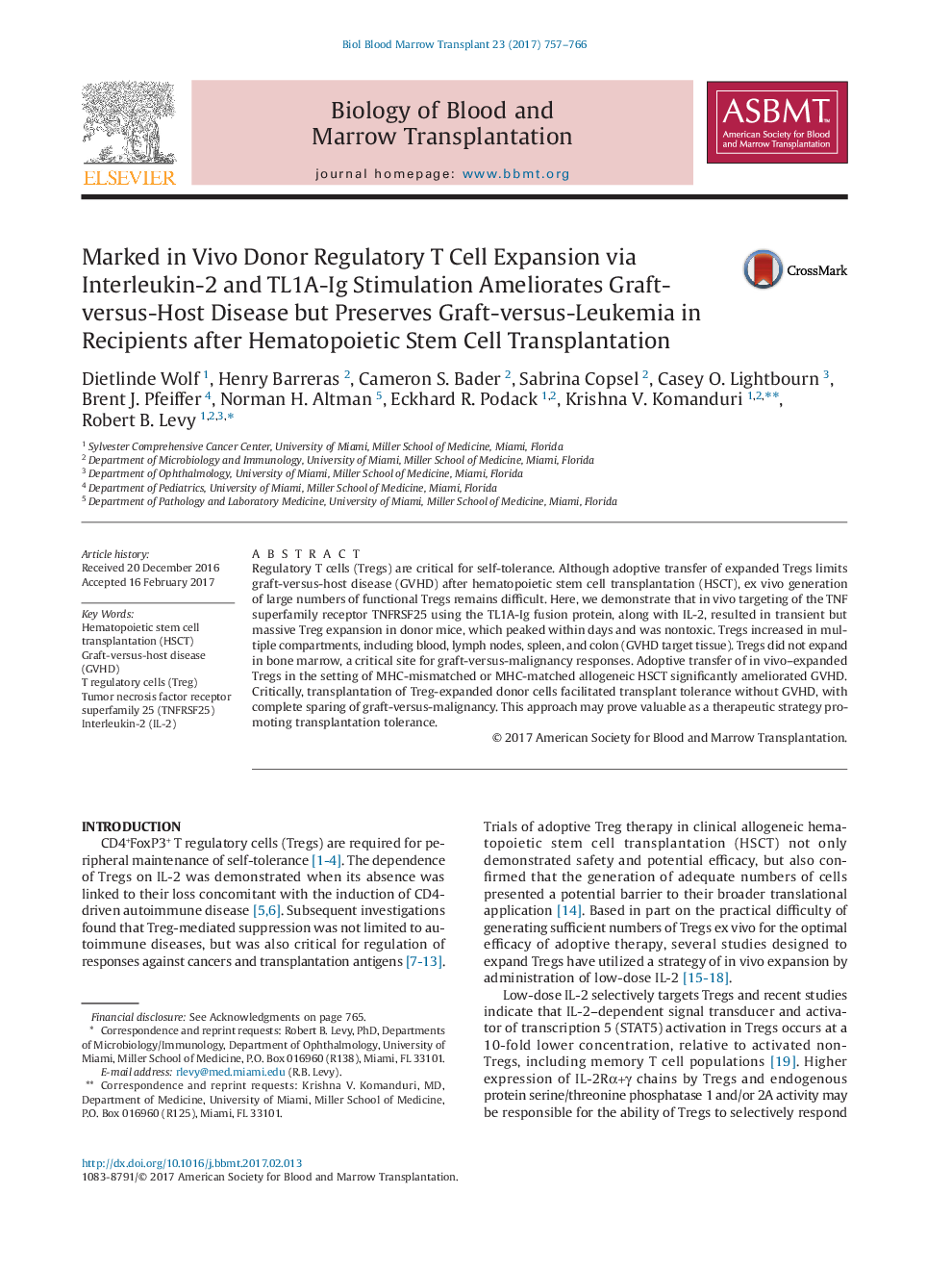| Article ID | Journal | Published Year | Pages | File Type |
|---|---|---|---|---|
| 5524082 | Biology of Blood and Marrow Transplantation | 2017 | 10 Pages |
â¢TNFRSF25 receptor targeting with a fusion protein together with low-dose IL-2 elevates levels of regulatory T cells to >50% of the CD4 compartmentâ¢Regulatory T cell levels are markedly increased in blood, spleen, lymph nodes, and colon but not in marrowâ¢Donor regulatory T cell expansion results in ameliorated graft-versus-host disease while preserving the graft-versus-leukemia effect
Regulatory T cells (Tregs) are critical for self-tolerance. Although adoptive transfer of expanded Tregs limits graft-versus-host disease (GVHD) after hematopoietic stem cell transplantation (HSCT), ex vivo generation of large numbers of functional Tregs remains difficult. Here, we demonstrate that in vivo targeting of the TNF superfamily receptor TNFRSF25 using the TL1A-Ig fusion protein, along with IL-2, resulted in transient but massive Treg expansion in donor mice, which peaked within days and was nontoxic. Tregs increased in multiple compartments, including blood, lymph nodes, spleen, and colon (GVHD target tissue). Tregs did not expand in bone marrow, a critical site for graft-versus-malignancy responses. Adoptive transfer of in vivo-expanded Tregs in the setting of MHC-mismatched or MHC-matched allogeneic HSCT significantly ameliorated GVHD. Critically, transplantation of Treg-expanded donor cells facilitated transplant tolerance without GVHD, with complete sparing of graft-versus-malignancy. This approach may prove valuable as a therapeutic strategy promoting transplantation tolerance.
